We independently review all recommended products and services. When you make a purchase using our links, we may earn a commission.
How to Soundproof Canopy Bed: 7 Proven Methods
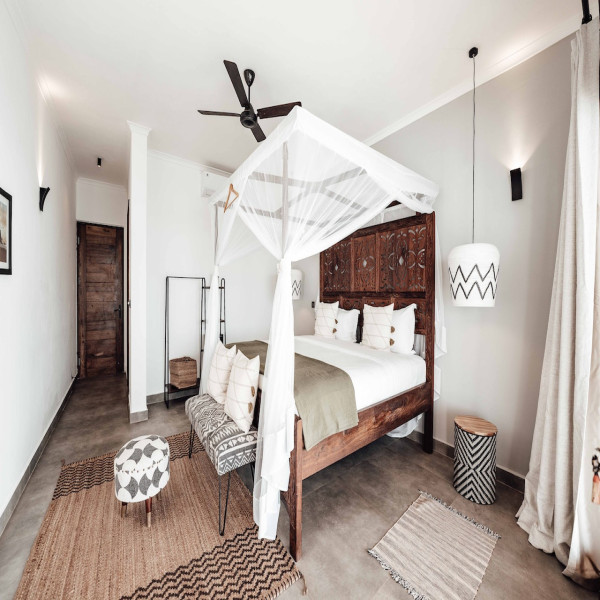
We independently review all recommended products and services. When you make a purchase using our links, we may earn a commission.

Are you tired of being kept up at night by outside noise? According to a study by the U.S. Environmental Protection Agency, noise pollution can have a serious impact on our health and well-being, including decreased sleep quality and increased stress levels.
But don't worry, there is a solution: soundproof bed canopy. By creating a peaceful oasis in your bedroom, you can reduce stress and improve the quality of your sleep.
In this blog post, we'll provide step-by-step instructions for soundproof canopy bed and creating your own oasis.
We'll also offer tips and tricks for troubleshooting common issues and testing the effectiveness of your soundproofing efforts.
So let's get started.
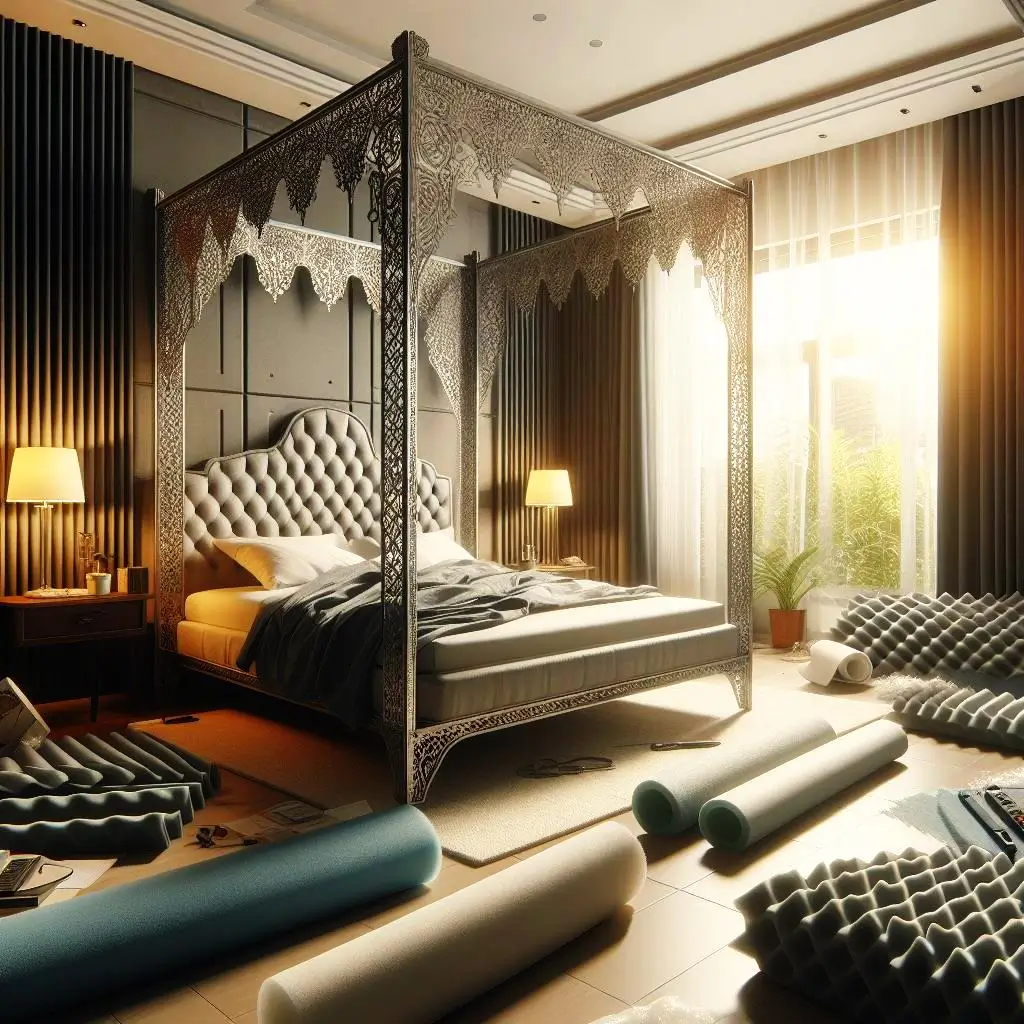
Before you start soundproofing canopy bed, it's essential to assess its materials, design, and the level of noise you're experiencing.
This step will help you choose the right materials and techniques to soundproof bed canopy effectively.
First, determine the materials your bed is made of. Some materials, like metal, reflect sound more than others, like wood.
If your bed is made of a material that reflects sound, you may need to use thicker or more sound-absorbing materials to achieve the desired effect.
Next, consider the design and shape of your canopy bed. Some beds have more open spaces than others, which can affect the amount of sound that enters or exits the bed.
If your bed has a lot of open space, you may need to use more sound-absorbing materials or techniques to block out noise.
Finally, evaluate the level of noise you're experiencing. Are you hearing sounds from outside, or are you disturbed by sounds inside your own home?
This will help you determine which techniques or materials to use.
Once you've assessed your canopy bed, it's time to gather the materials you'll need for soundproofing.
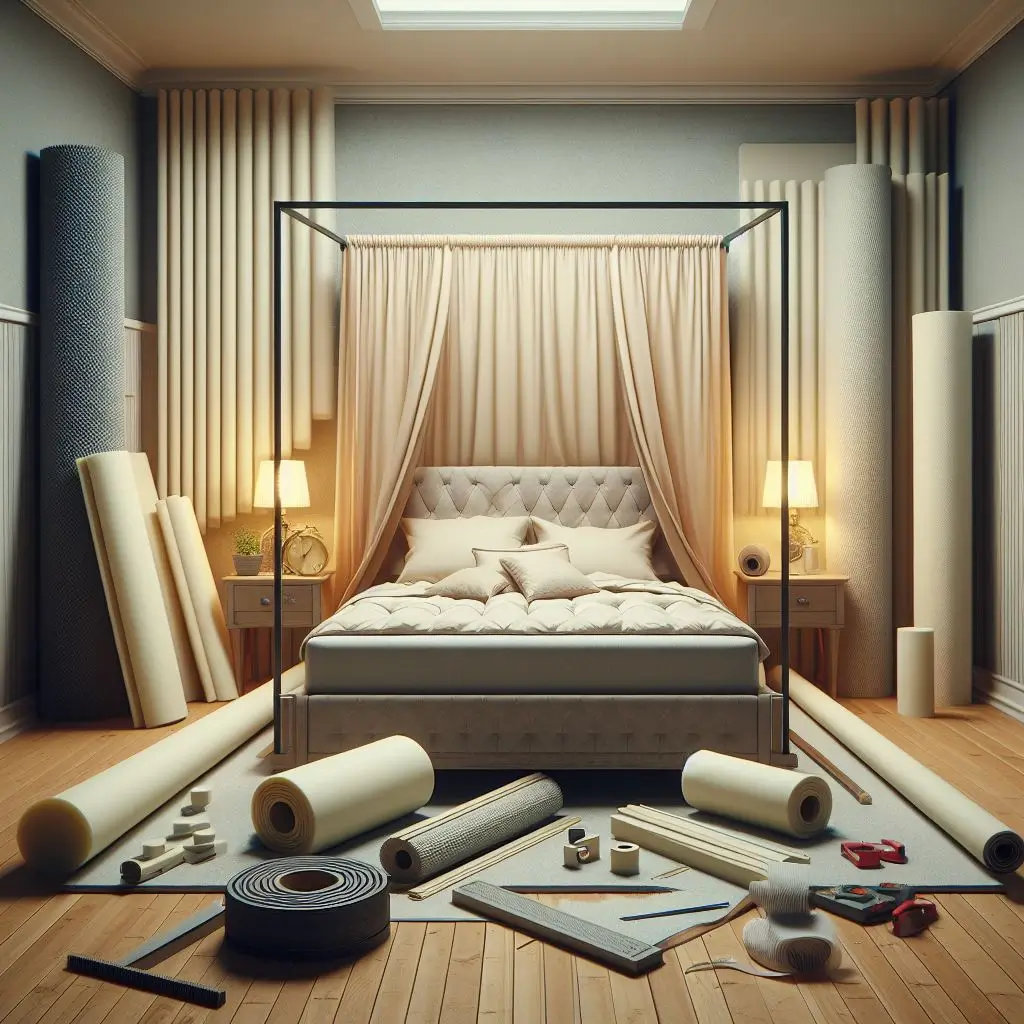
Here are some of the materials you may need:
Now that you have your materials, it's time to start soundproofing canopy bed.
Here's a step-by-step guide:
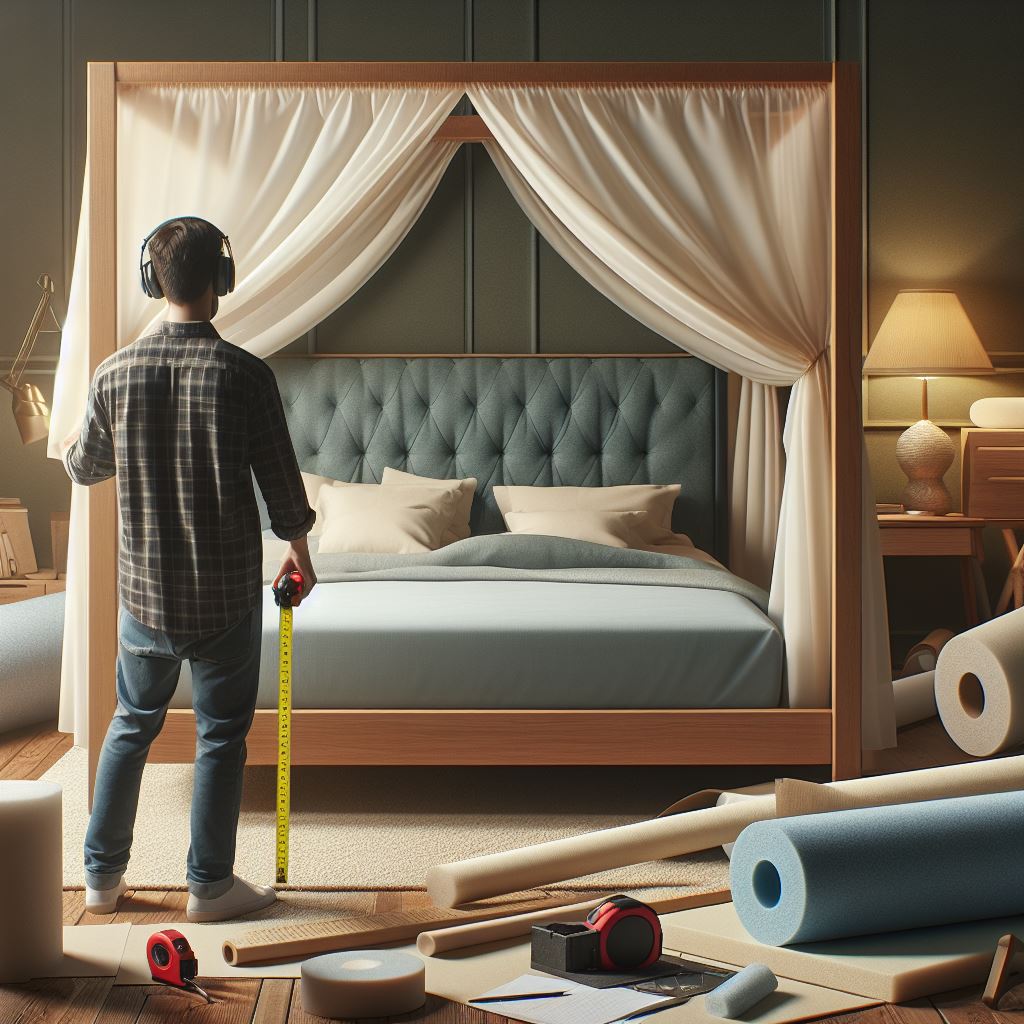
Measure your bed to determine how much acoustic foam, mass-loaded vinyl, or soundproof curtains you'll need.
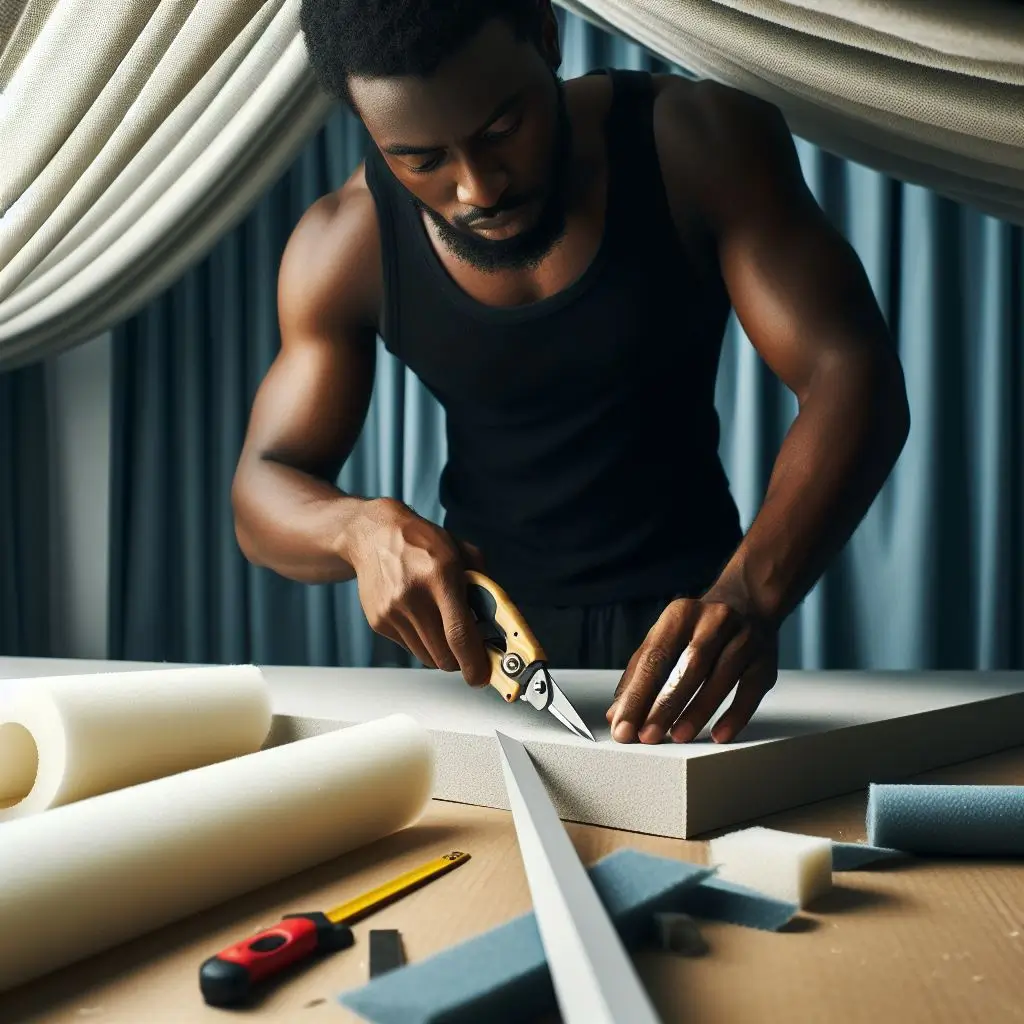
Using a utility knife or scissors, cut the materials to fit the size and shape of your canopy bed.
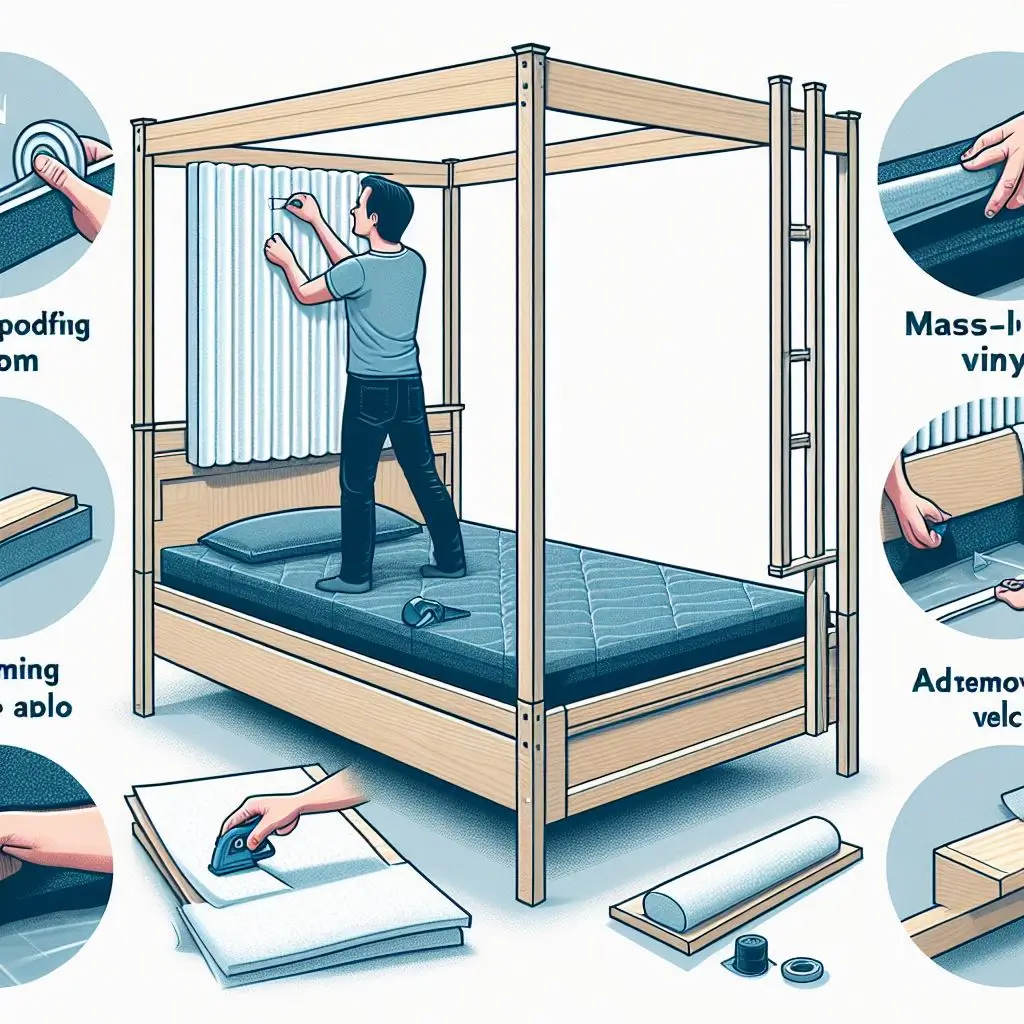
Attach the materials to your bed using adhesive or Velcro. If you're using acoustic foam, you may need to apply it to a piece of plywood first, then attach the plywood to your bed.
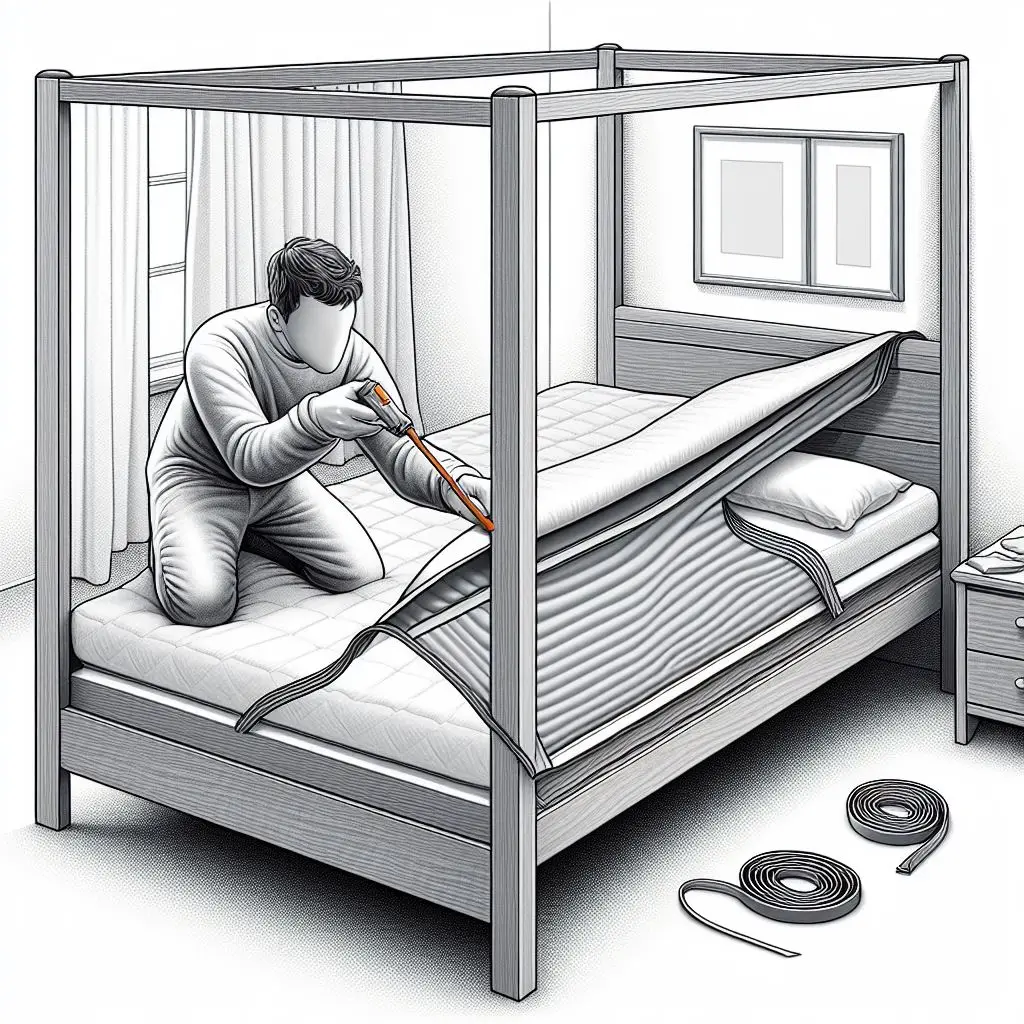
Use weatherstripping to seal any gaps between the materials and your bed. This will prevent air and sound from entering or leaving.
Once you've soundproofed your canopy bed, it's time to test the effectiveness of your efforts. Here are some steps you can take:
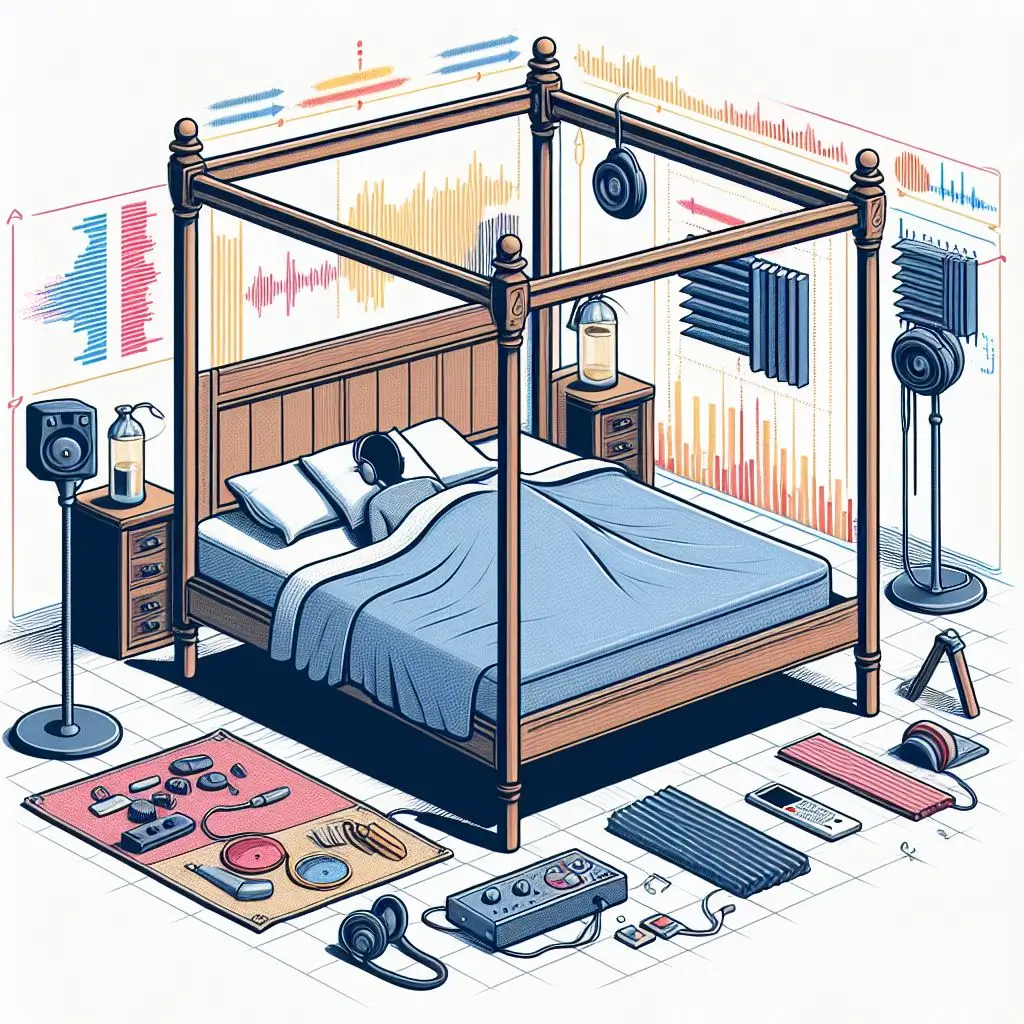
Record the noise you're trying to block out using a smartphone or other recording device.
Lie in your bed with the soundproofing materials in place, and play the recording of the noise you want to block out. Pay attention to how much of the noise you can still hear.
If the soundproofing isn't working as well as you'd like, try adjusting the materials or adding more. You may also want to try different types of materials to see which work best for your bed and the type of noise you're experiencing.
Once you've made adjustments, test the soundproofing again by playing the recording and seeing how much of the noise you can hear.
 Pro Tip
Pro TipIf the soundproofing isn't working as well as you'd like, don't be discouraged. There are many factors that can affect the effectiveness of soundproofing, including the type and volume of noise, the materials used, and the design of your bed. Keep experimenting until you find a solution that works for you.
Soundproofing a canopy bed can be a simple and effective way to create a peaceful and relaxing oasis in your bedroom.
By assessing your bed, gathering the right materials, and following the steps we've outlined, you can soundproof bed canopy and enjoy a better night's sleep.
Remember to test the effectiveness of your soundproofing efforts and make adjustments as needed.
With a little patience and experimentation, you can create your own oasis and enjoy a quieter, more peaceful sleeping environment.
Some of the best materials for soundproof canopy beds include acoustic foam panels, mass-loaded vinyl, and soundproof curtains. These materials can help to absorb and block out noise, creating a more peaceful sleeping environment.
To test the effectiveness of your soundproofing efforts, you can play a recording of the noise you want to block out while lying in your bed. Pay attention to how much of the noise you can still hear. If the soundproofing isn't working as well as you'd like, try adjusting the materials or adding more.
Yes, a soundproof canopy bed can be a simple and effective way to create a more peaceful and relaxing sleeping environment. By blocking out noise, you can reduce stress and improve the quality of your sleep. Just remember to test the effectiveness of your soundproofing efforts and make adjustments as needed.